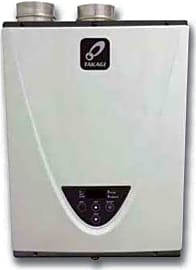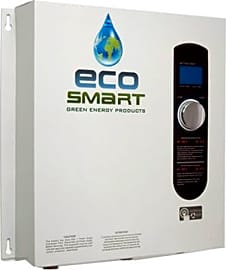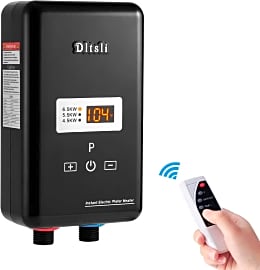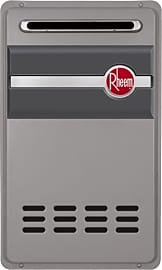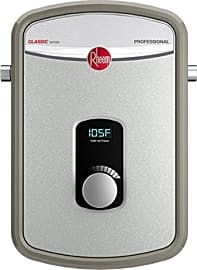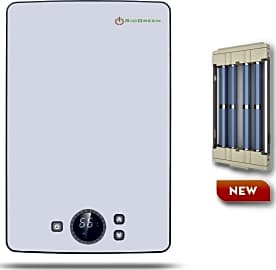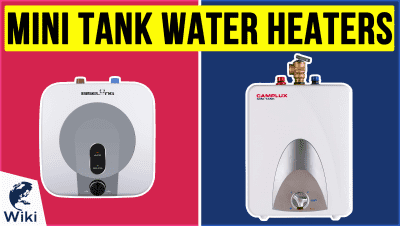The 10 Best Tankless Water Heaters

This wiki has been updated 41 times since it was first published in March of 2015. If you've ever had the unpleasant experience of the spray suddenly going cold on you in the shower, or wondered why most homes heat water constantly when it is only used occasionally, then it's time to consider a tankless water heater. Our selections include a variety of units that can not only save you money, but also provide an endless supply of comfortable H2O for your whole family. When users buy our independently chosen editorial selections, we may earn commissions to help fund the Wiki.
Editor's Notes
January 28, 2021:
It was a relatively uneventful round of updates, as most of our previous picks remained great choices for the category. We did notice that the Rheem RTG-84 and Camplux 5L Portable appeared to be suffering from some availability issues, but decided to retain the former option – as it seemed to be suffering from a temporary shortage – while we removed the latter — as it was less clear if or when this option would be stocked again.
We also added the Dltsli Instant Electric to our list — a compact option that makes a great choice for tiny homes or small vacation cabins, although it will likely have a hard time keeping up with multi-person residences. We liked that this option came with a convenient remote control, which might seem like a useless luxury, but we thought it was an interesting asset, as it allows you the freedom of installing the unit just about anywhere, even if it isn’t conveniently accessible.
January 16, 2020:
During this round of updates, we removed the Takagi T-KJR2, due to availability issues, and replaced the discontinued Stiebel Eltron Tempra with the company’s new, deluxe offering the Stiebel Eltron Tempra Plus. We also introduced the Ecotouch ECO90, a 40-amp offering that caught our eye with its smart design and list of features.
A few things to keep in mind while you’re shopping:
Capacity: While traditional hot water tanks are limited by the volume of water they can hold (normally 50 or 70 gallons in a residential context), tankless water heaters are limited by the rate of flow they can heat instantaneously (normally expressed in gallons per minute). So, whereas hot water tanks are limiting in the number of sequential showers they can deliver, tankless water heaters are limiting in the number of simultaneous showers they can deliver.
You want to make sure you select a unit with a maximum flow rating that can accommodate all the potential simultaneous hot water needs of you and your family. Note that in the case of two identical families living in different climates, the family living in the colder climate will require a higher maximum flow rating, to offset the natural temperature of the water. The Ecotouch ECO90, for example, is a smaller unit that can heat up to 1.5 gallons of water per minute (from 67 Fahrenheit to 106 Fahrenheit). Based on this, the company notes that it might have trouble heating water for showers in colder climates (showers usually draw around 2.5 gallons per minute). So, users who live in colder climates, or houses where simultaneous showering is likely to occur, should definitely look into a larger unit that can meet their needs. Alternatively, a family could also consider setting up several units throughout the house, at each point of use – one for the laundry room, kitchen and each bathroom.
Energy Source: Tankless water heaters are typically powered by either electricity, natural gas or liquid propane. Although it can sometimes present an inflated up-front cost, natural-gas equipment is typically a more-efficient means of generating heat, and can save you money in the long run, when compared to electric options. Nautural-gas models are also great for users who already have natural-gas service in their home, but limited electrical service. Liquid-propane models, though much less common than their alternatives, can present an option for users trying to outfit a home with limited electrical service and no access to natural gas, making them a great choice for recreational vehicles and remote cabins.
Installation: In virtually any circumstance, installing one of these units for the first time will involve new rough-in electrical work and sometimes, as in the case of natural-gas models, require that new gas lines be put in place. Natural-gas options also have the disadvantage of requiring venting for every heater installed, which presents an additional cost and makes it necessary to compromise your home’s vapor barrier. Because of these extra factors, users leaning toward a natural-gas model, over an electric option, will likely want to consider a single unit that can service their entire home, whereas the prospect of multiple, smaller electric units might make practical sense in some situations
Regardless of what type of tankless water heating system you decide to install, your installation should always be completed by a reputable, licensed gasfitter and/or electrician.
A Tankless Job Is A Job Worth Doing
The repairs become a kind of metaphor for his desperate attempts to fix his relationships with his wife and son, and, as a result, they become an obsession.
Fans of the hit television series Breaking Bad (and I promise no spoilers here) may remember an episode in which Walt, the main character, uses his illegally acquired money to make much needed repairs on his house. The repairs become a kind of metaphor for his desperate attempts to fix his relationships with his wife and son, and, as a result, they become an obsession.
During one of several trips to the home improvement store, a sales clerk asks him about the water heaters at which he's looking. Walt inquires about tankless models, and the clerk, presumably working on commission, lights right up.
That moment is based on the very real fact that tankless water heaters are more expensive than their enormous counterparts, but if you're willing and able to take the plunge, they'll save you a lot more money in the long run.
For starters, tankless heaters don't store a big tank full of water–hence the moniker tankless.
Traditional tank heaters have to keep that large body of water at a constant temperature so that a certain amount of hot water is available at all times. If you use up that tank of hot water, you have to wait for the new water coming into the tank to heat up.
That means you're spending more time and gas keeping many gallons of water hot even when you might not be using them. That's something called standby heat loss, and it's a gouging sword in the guts of your gas bill.
Tankless heaters, by contrast, circulate a flow of incoming water past a heat exchanger and back out the unit, heated and ready to go. There's no residual energy loss, and there's an endless supply of hot water. Gas models require additional ventilation, which is expensive to set up, and electric models will certainly raise your electric bill, but the savings will undeniably be present, and the average tankless heater will outlive a traditional heater by five to ten years.
No Tank Doesn't Mean No Options
At first glance, going tankless might seem like a simple change. After all, the only difference is that you're nixing the tank in favor of the much smaller heat exchanger. Well, it turns out there are some important differences to consider among tankless water heaters that could make or break your purchase and installation.
Electric models use an electrically powered heat exchanger, which is a hefty tax on your power bills, but nothing compared to the cost of standby heat loss.
Tankless water heaters come in two main categories: gas and electric. Electric models use an electrically powered heat exchanger, which is a hefty tax on your power bills, but nothing compared to the cost of standby heat loss.
Gas powered tankless heaters come divided into two subcategories. There are your standard models, which require a basic ventilation system, and then there are condensing models which double the number of heat exchangers. That's great if you only have the one tankless unit to supply a whole house with hot water, but they require additional ventilation construction, as well as a condensate drain to evacuate the unit of moisture.
You're going to need to take a look at the available gas lines coming into your property before choosing a gas powered tankless water heater, as they may require a larger intake pipe than you currently have. If that's the case, it's going to be much less of a hassle to go electric. For the time being, electric will be more expensive, but natural gas costs are projected to surpass electricity costs in the coming years.
America Is Slow To Go Tankless
Say what you want about the US; there's a lot of space here. Sure, some of our cities are ridiculously overpopulated and many of our rural ares are equally underpopulated, but when you average it all out, there's a lot of room to breathe.
That's why a lot of American things are simply bigger than they are elsewhere in the world.
That's why a lot of American things are simply bigger than they are elsewhere in the world. Streets and the cars that drive on them, buildings and their work forces, houses and their families–all on the large side compared with the majority of the developed world.
It's no surprise, then, that even though we had our hands on tankless water heating technology in the late 1800s, we opted to standardize large tank water heaters in homes throughout the land. We had the space for it, so why bother economizing?
Now that gas and electricity are becoming so expensive, a lot of homeowners in the US are finding different ways to save on their energy costs, one of which are these tankless heaters. They've been immensely popular in Europe and the East for ages, so it was only a matter of time before our economic reality and their convenience merged.
The best part is that units in the US are priced to appear as a luxury item. People view tankless water heaters as a status symbol, a marker of the savvy and wealthy homeowner. As demand increases, unit prices are sure to come down, but now's the time to get in on the trend. It's never to soon to start saving.


